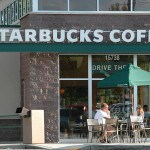General Motors Co. won its second straight trial against drivers who blamed car wrecks on faulty ignition switches, boosting the company’s outlook for resolving hundreds of similar cases on more favorable terms.
The crash of Dionne Spain’s 2007 Saturn Sky on a slippery New Orleans bridge in 2014 was caused by a rare Louisiana ice storm rather than a defect found in millions of GM vehicles, a Manhattan federal jury found on Wednesday.
“The jurors studied the merits of the case and saw the truth: This was a very minor accident that had absolutely nothing to do with the car’s ignition switch,” GM said in a statement.
GM, which recalled millions of vehicles over the flaw in 2014, admitted using defective ignition switches for years and hiding it from customers and regulators. But the company is challenging suits that it says wrongfully blame the flaw for crashes, injuries and deaths.
The trial was the second of six bellwether cases, so called because they’re used to test strategies. The jury’s reaction to the evidence may push either side to settle — or battle out — hundreds of other cases and help set the size of any settlements. Each side selected half of the bellwethers.
“This was GM’s handpicked, easy case to win. If they didn’t win this one, they wouldn’t win any case,” said Erik Gordon, a business professor at the University of Michigan Law School who isn’t involved in the litigation.
‘Unreasonably Dangerous’
While the jury sided with Detroit-based GM, it nevertheless agreed that Spain’s Saturn Sky was “unreasonably dangerous” as a result of the defect. The jurors said unanimously that her car deviated from the company’s performance standards and that GM failed to use reasonable care to adequately warn consumers of that danger.
“The plaintiffs can claim a victory at least insofar as the jury made that finding, which is a critical finding,” said Carl Tobias, who teaches product-liability law at the University of Richmond in Virginia. “Every case will be on its own merits, but I think they can claim that as an important development.”
GM argued during the trial that there was insufficient evidence that Spain’s car had a defective switch. The company was able to raise that defense because a statistical sampling showed that not every affected make and model in the massive recall had the flaw. But the jury didn’t buy it – the only win for plaintiffs’ lawyers in the case.
‘Good Findings’
“I do think that the jury’s findings on Spain’s vehicle are good findings, and that they advance the goals” of other plaintiffs, Spain’s attorney Randall Jackson said. “In a case that was selected by GM as their first bellwether, the jury was still able to look objectively at the proof and arrive at these findings, despite GM’s arguments to the contrary.”
The trial tilted in GM’s favor even before the jury began deliberating. U.S. District Judge Jesse Furman threw out the plaintiffs’ key fraud claim against GM at the end of witness testimony, saying Spain hadn’t presented enough evidence to show that the company made false or misleading statements to her about the defect. He rejected other claims before the trial, including a demand for punitive damages.
Criminal Probe
The carmaker has already paid out more than $2 billion to resolve legal claims stemming from the scandal, including $900 million to end a criminal probe by the U.S. government; $575 million to settle a shareholder suit and more than 1,380 civil cases by victims; and $595 million through a victims’ compensation fund outside of court.
Since the scandal broke, GM Chief Executive Mary Barra has moved to change the company’s culture. She fired 15 people for involvement in the ignition failure. Barra also added a vice president of safety and has streamlined the process for reporting defects. Company executives will even monitor chat rooms to look for customer complaints that could be defect-related.
When the flaw was discovered, it could have been been fixed by spending $1 on each vehicle, prosecutors said.
Spain and her passenger, Lawrence Barthelemy, suffered only minor injuries in the New Orleans crash and didn’t report other health problems until weeks later, GM attorney Mike Brock said March 14 in his opening statement to jurors. The lawyer said the vehicle was only scratched.
No Dents
“This is a case about a car that doesn’t even have a dent,” Brock, of Kirkland & Ellis LLP in Washington, said at the trial. “This car is not the villain in this case.”
Brock said the crash was caused by an ice storm that was responsible for dozens of accidents on the same bridge that night. Even the police cruiser that responded to the crashes was rear-ended by an ambulance near the pileup, the jury was told.
“Sometimes, accidents just happen,” Brock said at the trial.
GM also argued that Spain’s injuries, reported weeks after the crash, weren’t caused by the accident but were work-related. The carmaker told jurors that Barthelemy’s back pain was the result of sitting in jail for several days for an unrelated traffic violation.
Previous Trial
The first bellwether trial, in a case selected by the plaintiffs, ended in embarrassment for their lawyers, who are among the best-known attorneys in the industry. The trial stopped abruptly when GM revealed evidence that the plaintiffs, an Oklahoma couple, had lied under oath and wrongfully blamed GM for the family’s eviction from their “dream house.”
Plaintiffs in all the cases allege GM endangered drivers and passengers by delaying the recall of defective vehicles. Due to a weakness in the design of ignition switches, jostled keys or a bump from a knee could shut off the engine, disable power steering, power brakes and air bags and leave occupants almost helpless as vehicles careen out of control.
GM has said top executives didn’t know the switch was a persistent problem, but in the Justice Department settlement the company admitted knowing about the defect by 2005 and concealing it from regulators from 2012 to 2014. The knowledge was established before the company’s $49.5 billion government bailout in 2009, and the concealment continued after its sale to “New GM” in a bankruptcy reorganization.
The company is separately awaiting an appeals court ruling in a group of lawsuits rejected as a result of the bankruptcy sale. GM argues it was shielded from the suits by bankruptcy law. GM, which received in a 2009 government bailout, was able to dodge the cases because the sale barred litigation against the “old” entity, even though new one employed many of the same employees and executives.
The case is In re General Motors LLC Ignition Switch Litigation, 14-MD-2543, U.S. District Court, Southern District of New York (Manhattan)
Was this article valuable?
Here are more articles you may enjoy.

 Death Toll Rises From Tornadoes, Wildfires and Storms in Multiple States
Death Toll Rises From Tornadoes, Wildfires and Storms in Multiple States  Live Nation Loses Bid to Narrow DOJ Ticketmaster Case
Live Nation Loses Bid to Narrow DOJ Ticketmaster Case  California Man Wins $50M in Lawsuit Over Burns From Starbucks Tea
California Man Wins $50M in Lawsuit Over Burns From Starbucks Tea  A True Alternative to Opioids for Workers’ Comp? Questions Remain
A True Alternative to Opioids for Workers’ Comp? Questions Remain 